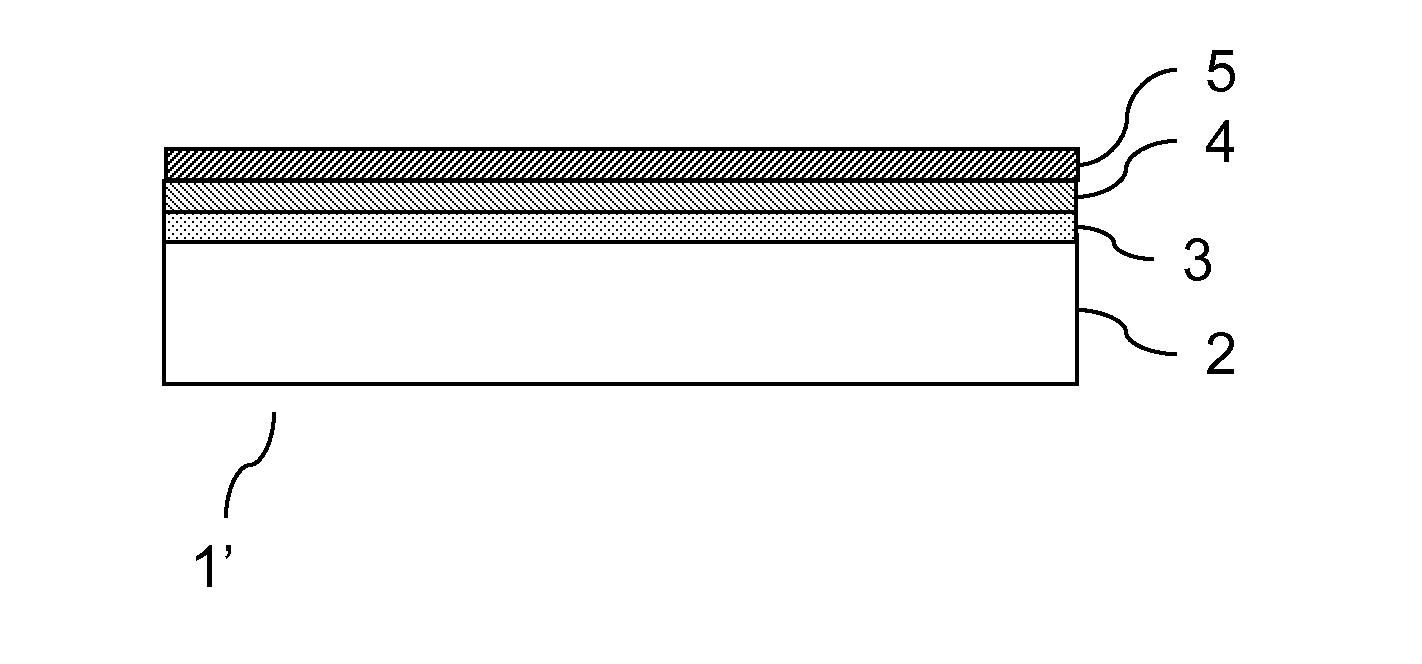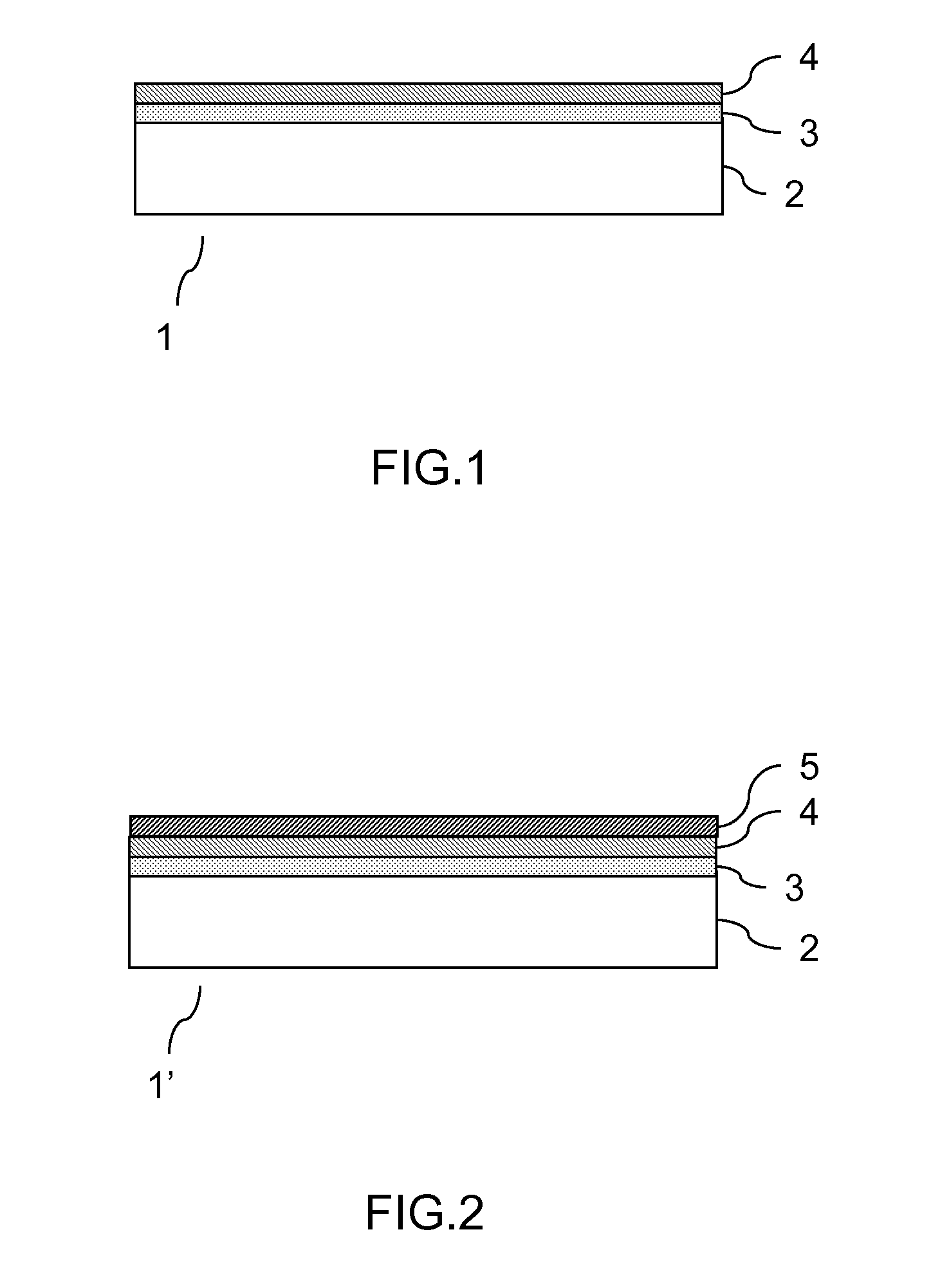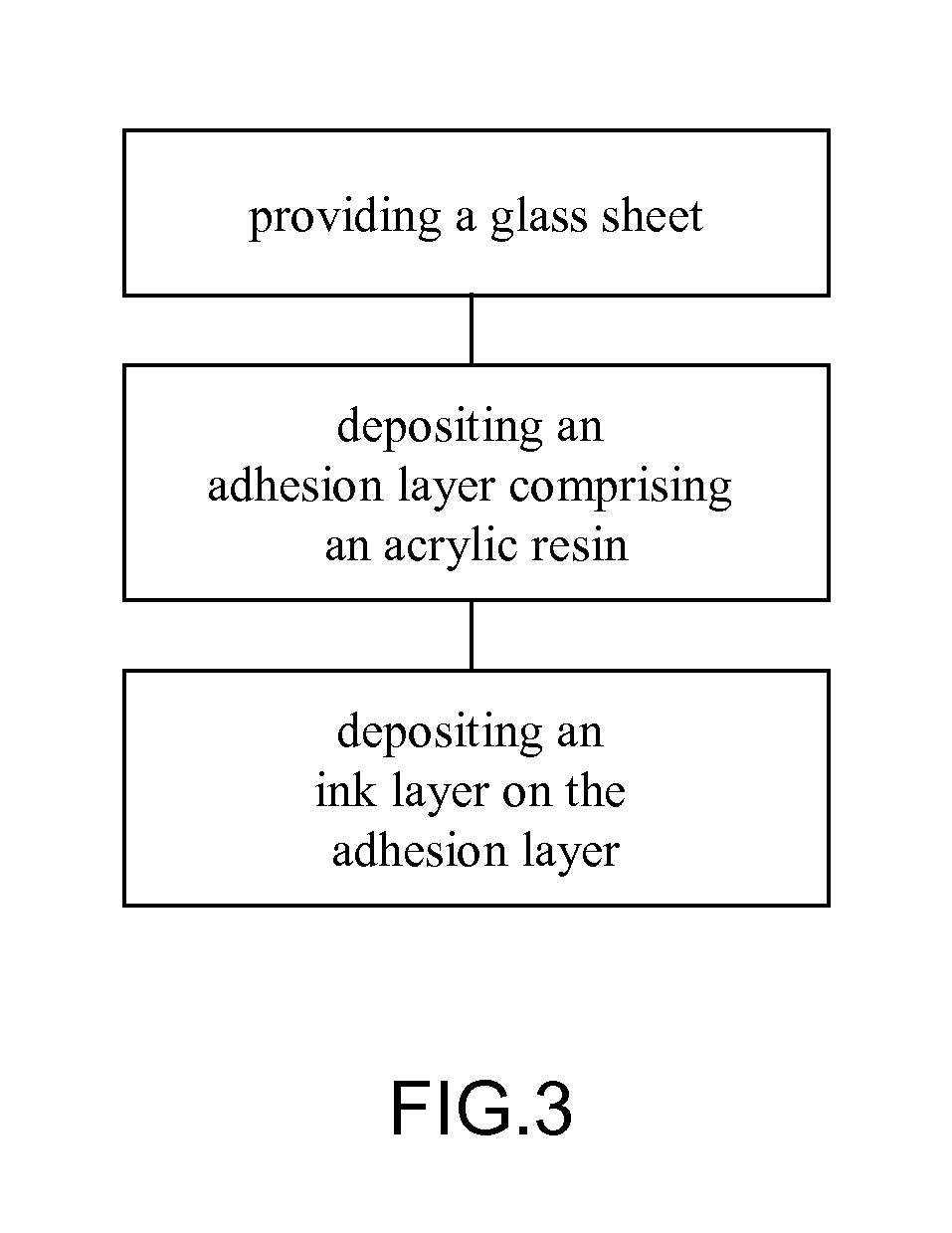Glass article
a glass article and glass technology, applied in the field of glass articles, can solve the problems of affecting the overall stability of the composition, affecting and deposited ink often shows undesirable phenomena, so as to improve the adhesion of ink on the glass article
- Summary
- Abstract
- Description
- Claims
- Application Information
AI Technical Summary
Benefits of technology
Problems solved by technology
Method used
Image
Examples
example 1 (
in Accordance with the Invention)
[0057]A glass article according to the invention has been prepared as follows:
[0058]A clear glass sheet of soda-lime glass (4 mm thickness, 50 cm×50 cm) has been washed in the normal manner. It has been pre-treated by spraying a 2% Silquest® A-1120 (General Electric) silane aqueous solution. After being dried, the glass sheet has then been covered by an adhesion layer using a bar coater. The adhesion layer was a transparent IR-curable composition comprising 80% of a methyl methacrylic resin, 10% of a melamine-formaldehyde, 10% of a bisphenol-A epoxy resin. The adhesion layer has then been dried at 150° C. for 15 minutes in a laboratory static infrared oven. Thickness of the adhesion layer, once dried, was approximately 40 μm.
[0059]The sheet of glass bearing the adhesion layer has subsequently been used as a substrate for depositing an UV-curable ink layer and therefore forming a coloured image. The ink deposition has been implemented by digital inkje...
example 2 (
in Accordance with the Invention)
[0062]A glass article according to the invention has been manufactured on a production line in which flat sheets of soda lime float glass were conveyed along the line by a roller conveyor.
[0063]A clear glass sheet has first been washed in the normal manner and has then been covered by an adhesion layer using a curtain coater. The adhesion layer was a transparent IR-curable composition comprising 70% of a methyl methacrylic resin, 16% of a melamine-formaldehyde, 12% of a bisphenol-A epoxy resin and 2% of Tinuvin® 5236 (CIBA). The adhesion layer has then been dried at 150° C. for 6 minutes in a laboratory static infrared oven. Thickness of the adhesion layer, once dried, was approximately 30 μm.
[0064]The sheet of glass bearing the adhesion layer has subsequently been used as a substrate for depositing an UV-curable ink layer and therefore forming a coloured image. The ink deposition has been implemented by digital inkjet printing in a vitrophany mode (...
PUM
| Property | Measurement | Unit |
|---|---|---|
| thickness | aaaaa | aaaaa |
| thickness | aaaaa | aaaaa |
| thickness | aaaaa | aaaaa |
Abstract
Description
Claims
Application Information
 Login to View More
Login to View More - R&D
- Intellectual Property
- Life Sciences
- Materials
- Tech Scout
- Unparalleled Data Quality
- Higher Quality Content
- 60% Fewer Hallucinations
Browse by: Latest US Patents, China's latest patents, Technical Efficacy Thesaurus, Application Domain, Technology Topic, Popular Technical Reports.
© 2025 PatSnap. All rights reserved.Legal|Privacy policy|Modern Slavery Act Transparency Statement|Sitemap|About US| Contact US: help@patsnap.com



